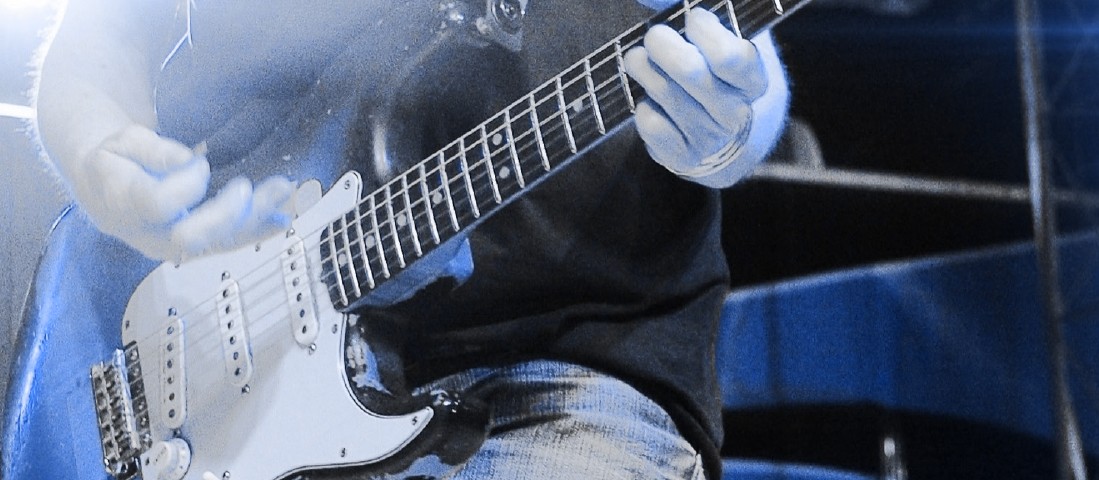Pentatonic scales are the foundation for blues and blues-rock guitar soloing. Most people break the pentatonic scales into five separate patterns, but I like to break them down into two basic patterns that expand. The expanded patterns cover the entire neck of the guitar and allow you to play using your 1st and 3rd fingers for maximum power and mobility. Throughout my years of teaching, I’ve found this system to be the fastest and most effective method for developing a “roadmap” for playing lead guitar.
A pentatonic scale is a 5-note scale (penta) with its name coming from the root (tonic). Here is an example of a root 6 and root 5 minor pentatonic scale in its basic form:

Here is an example of a root 6 and root 5 minor pentatonic scale in its expanded form:

Minor pentatonic scales work well with blues and blues-rock music because they consist of the 1st, 4th and 5th notes of the scale, which musically supports a 1, 4, 5 chord progression, which is the most common chord progression used in blues and blues-based rock. The pentatonic also has a minor 3rd and a b7, supporting two common sounds found in blues music.
In order to turn my pentatonic “roadmap” into something useful for guitar solos, you must be able to play the scales with fluidity and precision. Start by learning my pentatonic roadmap in its basic form and once you’ve mastered that, begin playing it in its expanded form using your 1st and 3rd fingers only. Be sure to use a metronome when practicing. Once you’ve begun to master the expanded form, begin playing it along with your favorite rhythm tracks in multiple keys. The key of E and A are two of the best keys to start with as so many classic blues and blues-rock are played in those keys.
How you put the notes of a pentatonic together is how you play lead. Making the notes of any scale come to life requires playing the scale until you own it, until it’s in your DNA. Once you master playing these scales throughout the neck of your guitar, you can add various techniques such as hammer on’s, pull off’s, pinch harmonics, vibrato, and bends. Building a solid connection with your instrument is the single greatest thing you can do. Also, never underestimate the power of playing just one note; one note played with conviction can move an audience and leave them on the edge of their seats!
One final suggestion: never confuse practice time with play time. A solid 30-minute practice routine 5 days per week can open the door to hours of fun playing. I always tell my students — practice to perfection and play to have fun!


